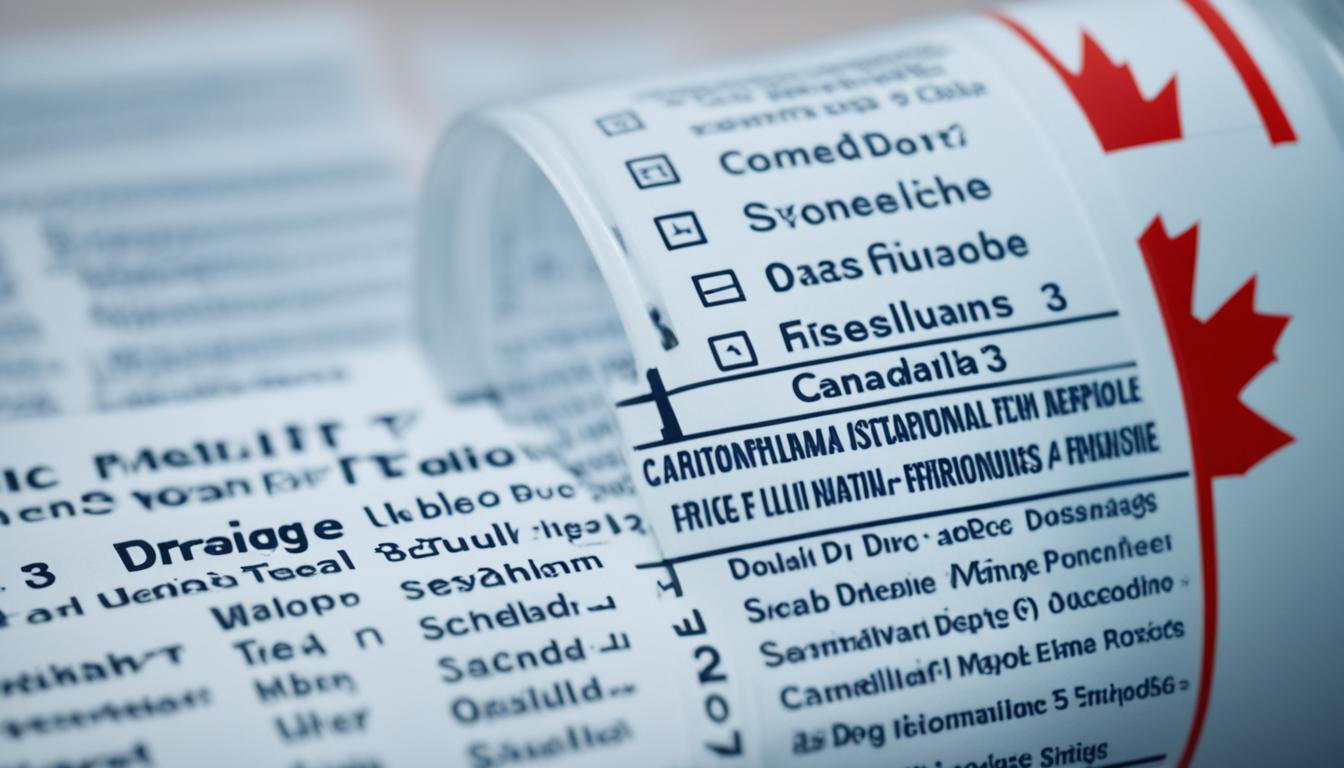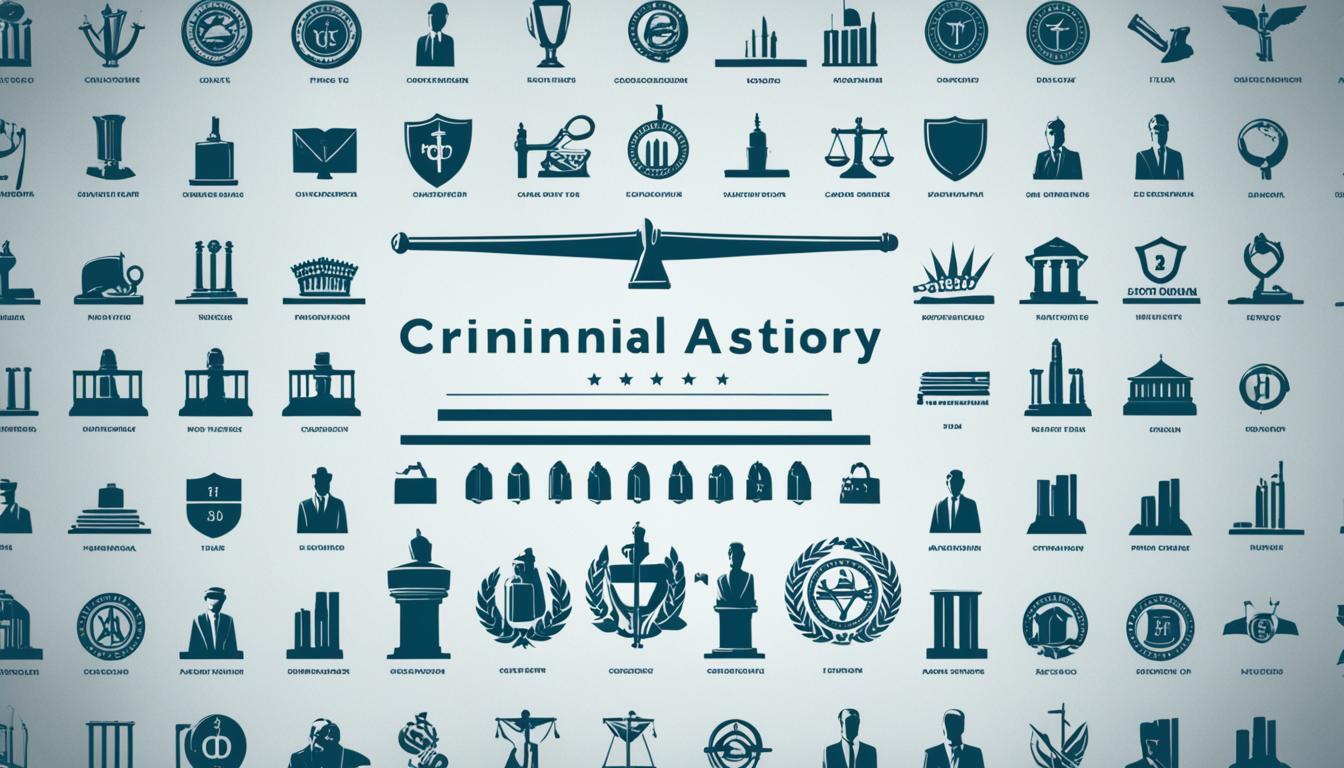Understanding Schedule 3 Drugs in Canada
Did you know that schedule 3 drugs in Canada are classified as substances with a moderate risk of abuse and dependency? These controlled substances include prescription drugs, narcotic drugs, and hallucinogens like LSD. If you’re curious to learn more about the drug scheduling system and Canadian drug laws, keep reading.
Key Takeaways:
- Schedule 3 drugs in Canada have a moderate risk of abuse and dependency.
- They include prescription drugs, narcotic drugs, and hallucinogens like LSD.
- Canadian drug laws, including the Controlled Drugs and Substances Act, regulate the possession, trafficking, and production of these substances.
- Penalties for offenses involving schedule 3 drugs range from 18 months to 10 years imprisonment.
- Healthcare professionals must comply with specific regulations when prescribing schedule 3 drugs.
Categories of Schedule 3 Drugs
Schedule 3 drugs in Canada encompass various categories of substances. This includes amphetamines, which are commonly used for conditions like ADHD and narcolepsy. Hallucinogens, such as LSD, are also classified under Schedule 3. Psychedelic drugs like psilocybin and mescaline fall into this category as well. Additionally, certain narcotic drugs with a moderate risk of abuse and dependency, like some opioids, are considered schedule 3 drugs. These categories are defined by the Controlled Drugs and Substances Act.

Schedule 3 drugs comprise a diverse range of substances with distinctive effects and potential uses. Amphetamines are stimulant medications that can improve focus and attention for individuals with ADHD. They’re also utilized to manage narcolepsy, a sleep disorder characterized by excessive daytime sleepiness and sudden bouts of sleep.
On the other hand, hallucinogens like LSD induce profound alterations in perception, mood, and thoughts. These drugs can lead to sensory distortions, hallucinations, and an expanded state of consciousness.
Psychedelic drugs, such as psilocybin (found in magic mushrooms) and mescaline (derived from peyote cacti), produce similar hallucinogenic effects but are often used in ceremonial or therapeutic contexts.
As for narcotic drugs within the category, certain opioids with a moderate risk of abuse and dependence fall under schedule 3. These opioids, which include specific medications for pain management, are subject to regulation due to their potential for misuse.
The classification of these substances under Schedule 3 is established and governed by the Controlled Drugs and Substances Act in Canada.
Regulations and Impact on Prescriptions
When it comes to schedule 3 drugs in Canada, there are important regulations in place that directly influence how prescriptions are handled. As healthcare professionals, we must adhere to specific rules to ensure the safe and controlled use of these substances.
The Controlled Drugs and Substances Act outlines the medication scheduling regulations and prescription requirements that must be complied with when prescribing schedule 3 drugs. These regulations serve as guidelines to healthcare professionals, including doctors like myself, to ensure the responsible and proper administration of these medications.
Prescriptions for schedule 3 drugs may have certain limitations. For example, there may be restrictions on the quantity of medication that can be prescribed at one time, as well as the availability of refills. Additionally, there are mandatory record-keeping requirements to ensure accurate documentation of these prescriptions.
By implementing these regulations, the aim is to protect the well-being of patients and prevent the misuse or abuse of schedule 3 drugs. This careful oversight ensures that patients receive appropriate treatment while minimizing the potential for harm.
As healthcare professionals, it is our responsibility to stay informed about these regulations and comply with them to ensure the highest standard of care for our patients.

Prescription Requirements for Schedule 3 Drugs
| Prescription Requirement | Description |
|---|---|
| Quantity Limitations | Restrictions on the amount of medication that can be prescribed at one time. |
| Refill Availability | Determines whether medications can be refilled and if so, under what conditions. |
| Record-Keeping | Mandatory documentation of prescriptions to ensure accurate records and accountability. |
Penalties for Possession and Trafficking
When it comes to drug trafficking and drug possession in Canada, the penalties can be severe. Under the Controlled Drugs and Substances Act, individuals who violate the regulations pertaining to schedule 3 drugs may face imprisonment. The maximum penalties for these offenses range from 18 months to 10 years, depending on the specific offense and the substance involved.
Drug trafficking involves the distribution, sale, or transportation of controlled substances, while drug possession refers to the act of having controlled substances for personal use or distribution. Both offenses carry significant consequences under Canadian law.
For drug trafficking offenses, the penalties are typically more severe than those for drug possession. The severity of the penalty depends on several factors, including the quantity of drugs involved, the type of substance, and the individual’s criminal history.
The Controlled Drugs and Substances Act categorizes drug trafficking offenses as either an indictable offense or an offense punishable on summary conviction. An indictable offense is generally more serious and carries a heavier penalty.
| Offense | Possible Penalty |
|---|---|
| Drug Possession (Schedule 3) | Up to 10 years imprisonment |
| Drug Trafficking (Schedule 3) | Up to 10 years imprisonment (summary conviction) Up to life imprisonment (indictable offense) |
It is important to note that the penalties mentioned are the maximum penalties and may vary depending on the specific circumstances of each case. The court considers various factors, such as the offender’s role in the offense, the quantity of drugs involved, and the potential harm caused by the substances.
These penalties highlight the seriousness with which the Canadian legal system treats drug trafficking and drug possession offenses. The aim is to deter individuals from engaging in illegal activities related to controlled substances and to protect public health and safety.
Sentencing and Dispositions
Sentencing for offenses related to schedule 3 drugs in Canada follows the guidelines set out in the Controlled Drugs and Substances Act. Offenses under this act are considered hybrid offenses, meaning the crown prosecutor chooses whether to treat them as summary or indictable offenses.
The maximum penalties for these offenses can range from 18 months to life imprisonment. However, there are no mandatory minimum penalties set for schedule 3 drug offenses. Dispositions available for these offenses include fines, custody, conditional sentences, and discharge.
| Offense | Maximum Penalty | Disposition |
|---|---|---|
| Possession of Schedule 3 Drugs | 18 months imprisonment | Fines, custody, conditional sentence |
| Trafficking of Schedule 3 Drugs | Life imprisonment | Fines, custody, conditional sentence |
| Production of Schedule 3 Drugs | 10 years imprisonment | Fines, custody, conditional sentence, discharge |
Glossary of Legal Terms
Understanding the legal terminology surrounding schedule 3 drugs in Canada is essential for navigating the laws and regulations associated with these substances. Two key pieces of legislation that define and regulate offenses related to controlled drugs and substances are the Controlled Drugs and Substances Act and the Criminal Code.
In Canada, drugs are classified into different schedules based on their level of risk and potential for abuse. Schedule I includes drugs with a high risk of dependency, while Schedule II encompasses synthetic cannabinoids and cannabis-related substances.
Amphetamines and hallucinogens fall under Schedule III, and popular pharmaceuticals like benzodiazepines are classified as Schedule IV. Additionally, precursor substances for illegal fentanyl production are listed in Schedule V.
It is important to understand legal terms such as hybrid offense, indictable offense, reasonable doubt, and summary offense. These terms relate to the severity of the offense, burden of proof, and potential penalties faced when charged with a schedule 3 drug-related offense.




















Post Comment Cancel reply